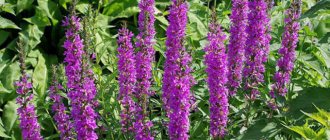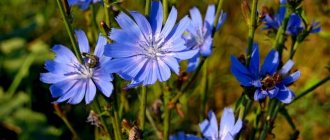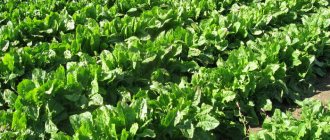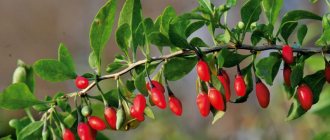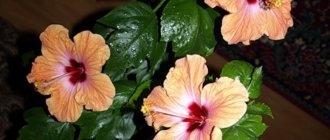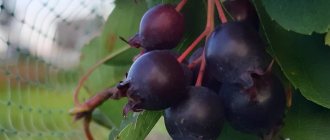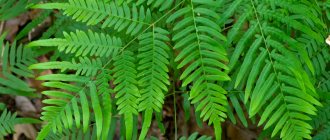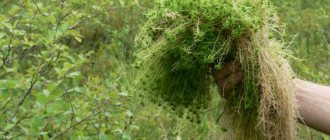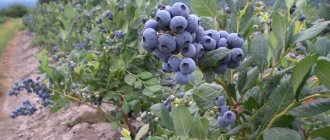Many of us have more than once noticed in parks, forest areas or in someone's gardens a medium-sized herbaceous plant, which is crowned with light umbrella-shaped flowers. This herb is moss. Popularly, there are other names for the plant, by which it is also easy to guess the culture: rustle, marsh kupir, yaglichka, yaglitsa, food-grass, delilnik. There is even such an unusual name as “goat’s foot”, which is applied to the common dream because part of its leaf resembles the imprint of a goat’s hoof.
However, gooseberry is a simple weed that grows almost everywhere in the wild. It is distinguished by its ability to grow quickly due to the fact that, like nettles, it quickly forms a well-branched root system.
But for some reason, many people purposefully grow this weed in their gardens. The thing is that this culture has a number of useful and healing properties, which will be discussed later, and some varieties have decorative qualities.
So, in this article we will figure out what sap is, what it looks like, what useful properties there are and areas of its application.
Planting, storage and use of variegated dreamweed
It is most convenient to plant the pine tree with pieces of rhizome .
To do this, you just need to divide the root into several parts. They are planted in cool weather, in early autumn. Before this, the land is prepared: it is dug up and freed from weeds, fertilized with humus or composted. It is important not to replant the tree during its growth period, especially in the hot summer, since the leaves quickly wither, turn yellow and curl. It grows quite quickly and is resistant to cold climates, but prolonged frosts threaten the roots. Dry soil and open areas interfere with the growth of honeydew. Wheatgrass easily displaces this grass, and in moist areas, hemlock is dangerous for it. For variegated grass, it is important to choose a place where it will not harm fragile flowers and trees. The plant is a high-quality natural feed for livestock, and bees can collect kilograms of honey from this grass.
collect and store herbs correctly in order to preserve their healing qualities. It is necessary to collect the above-ground parts of the tree during the flowering period. Dry the plant in air, although you can use special dryers. The roots can be collected after the plant has flowered and dried in the shade. The leaves are stored in paper bags and the roots in wooden boxes. In this case, the medicinal properties are retained for no longer than a year. It is important that folk remedies are not used during pregnancy and lactation, as well as in the event of allergic reactions.
Why has it always been considered a weed? It should not be eaten as the stems and roots contain too little protein. You can only add the leaves to salads or green soups and use them as a seasoning. The seeds contain more proteins, but the bitterness of the fruit due to the high content of flavonoids is unpleasant to the taste. Even flowers can ripen at completely different times. Based on the dream, healing decoctions and infusions are prepared according to folk recipes. The composition of the plant is as close as possible to the content of human blood plasma, which is why its properties are so beneficial and an overdose is impossible.
Features of caring for and growing dreamweed
The most common variety found in gardens is the common cherry, which you can grow in your own garden plot yourself, following the following rules:
- For better growth of the crop, you should choose more shaded areas for its planting and further cultivation. This plant loves moisture and thrives in any cultivated type of garden soil.
- The grass can be propagated using seeds or cuttings from the rhizome. The plant can be planted any day between May and the end of September. It is better to bury the seeds or a piece of root into the ground at a distance of 5-8 cm from each other.
- The plant grows very quickly throughout the garden, so if you decide to plant it in your garden plot, it would be a good idea to consider measures that can prevent the excessive spread of the crop. For example, you can dig up excess shoots every year or plant the grass in an underground container made of plastic or iron at the very beginning.
- To rejuvenate the plant, it should be completely mowed.
- Ornamental varieties require regular pruning, which must be carried out for sanitary purposes. To do this, cut off injured, dried or diseased stems.
- For the most part, after the tree has been planted, nothing much is required from the gardener. But if an ornamental variety has been planted, in order to maintain an attractive appearance, it should be formed properly, cutting off only the emerging flower stalks with inflorescences to prevent the sowing of seeds that do not have any decorative properties. If the common variety was chosen, then it only needs watering on especially hot and sultry days. Diseases and pests practically do not overcome the plant, since it has excellent antifungal and bactericidal properties.
Care
Regardless of the purpose of planting, caring for the crop is not particularly difficult. Important components for growth:
- timely watering;
- pest control;
- disease prevention.
For flowering and increasing honey-bearing qualities, light is needed, so honeybee is grown in open areas. For fodder purposes, on the contrary, it is recommended to place the plant in the shade of trees, since without direct sun the greenery begins to actively grow.
Treatment with insecticides when grown for food or melliferous purposes is carried out with caution.
For consumption, it is most convenient to grow the squash in small shaded areas with a good deep fence.
Watering
In its natural environment, it does not tolerate dry, hot summers in open areas. Its foliage fades, but appears again after prolonged rains. In ornamental gardening, if natural moisture is not enough, the plant is watered as the soil dries.
Weeding
Even growing for food purposes does not require weeding the beds. Driftweed displaces all known weeds. Therefore, it is often planted between raspberry bushes to get rid of nettles and loaches. At the same time, the growth of the tree itself is limited and regular mowing is carried out.
Fertilizer
This ground cover loves fertile soil. But the choice of fertilizer type depends on the purpose of cultivation. As a melliferous or medicinal crop, sapling does not require additional feeding. To fatten livestock, an increase in green mass is required; for this, the area is watered with diluted manure in the spring, and compost is added in the fall.
Young leaves of the dream
For food consumption, universal mineral supplements are added in early summer and fertilized with humus or peat in the fall.
Diseases and pests
It is resistant to infections and pest attacks. Insects attack crops weakened by drought. Since succulent leaves contain a lot of moisture, they become food for aphids and spider mites. You can suspect a parasite by the twisted leaves of greenery. If the plant is eaten, then pest control involves mechanical removal of damaged parts. In ornamental gardening, the use of insecticides is permitted.
When the leaves of the tree become covered with white or dark spots, this is a sign of a fungal infection. Such parts of the plant must be removed, and the bushes themselves are treated with fungicides.
Drying grass - description
The rhizome of the dream is creeping, horizontal; The stem is hollow, up to 1 m high, straight, grooved, branching in the upper part. The lower leaves are twice trifoliate, with pointed oblong and sharply serrate leaflets up to 8 cm long along the edge; The upper trifoliate leaves are located on short petioles and are smaller in size than the lower ones. On the upper side, the leaf blades of the tree are almost bare, pubescent below, and their veins are pinnate.
Small white flowers in the amount of 15-20 pieces are collected in umbrellas with a diameter of up to 15 cm and form a complex inflorescence with 20-30 rays. The umbrellas formed at the top of the stem are fertile, while the lateral ones are sterile. The fruit of the plant is a brown oblong and flattened two-seeded capsule up to 4 mm long.
Varieties of dream
Common borer
It is the most common and useful variety. It has been studied more than other varieties, which is why it is used as a medicinal product more often than other varieties.
The common gooseberry has an erect tubular stem that branches closer to the top. The herbaceous plant reaches a height of 0.5-1 m. The foliage is oblong-ovate in shape and has jagged edges. On the back side the leaves are covered with a small fluff, but on the front side they are absolutely smooth. One leaf reaches 10-30 cm in length and 15-35 cm in width. They are attached to the stem by petioles.
The upper leaves are smaller and do not have the same dissections as the lower leaves. Also, the leaves located in the upper part of the stem almost completely lack pubescence, and the petioles are very short, in contrast to the leaves located below, the length of their petioles reaches 30 cm. The inflorescences have the appearance of an umbrella, consisting of 20-30 smaller umbrellas, reaching each is 1.5 cm in diameter. The inflorescence consists of small white flowers.
Note! Only the central umbrella can bear fruit; the side umbrellas are not capable of this.
The grass (photo of which is presented below) begins to bloom at the beginning of summer, but sometimes the flowering period can last until August. The plant also has a fruit - a brown two-seeded plant with ribs. One fruit reaches a length of approximately 3-4 mm. They ripen closer to mid-August.
The crop has an underground root system, which also contains buds and seeds, which makes it even more difficult to control the grass, because for the most part, when trying to remove the plant, it grows with even greater force.
Loading …
Latifolia
This is a perennial herbaceous plant that is quite demanding in terms of care and maintenance. It grows only on the southeastern shore of Lake Baikal. It has a bare stem with grooves, which does not exceed 70 cm in height. The leaves located at the bottom of the stem have a rounded shape and large teeth along the edges. This herb has umbels reaching 5-15 cm in diameter and consisting of another 12-22 rays with small umbels, which include small snow-white flowers. The period of flowering and fruiting coincides with the same period of the common honeydew.
Important! Broad-leaved gooseberry is listed in the Red Book of the Russian Federation.
Decorative moth, variegated or variegated
It is the most striking variety among other varieties. The name variegated comes from the word variegated, which translated into Russian means multi-colored or variegated. This is a perennial herbaceous plant, often used in landscape design. Variegated gooseberry has trifoliate foliage, along the edges of which there are small denticles. The leaves are attached to the stem using long and persistent petioles. The back side of the leaf blade always has slight pubescence. The grass is very variegated, combining all white and green shades.
The root system of the crop is very branched, forming a long creeping root that can grow very quickly.
The inflorescences of variegated grass are represented by small umbrellas, consisting of a huge number of miniature flowers, painted white. Flowering continues for about two weeks. After the plant has flowered, seeds form in place of the inflorescences, which many gardeners rush to cut off as quickly as possible for the reason that they do not retain the signs of the mother crop.
This variety was bred to decorate a flower bed or garden, but it is also useful for joint diseases, heart failure, atherosclerosis and mastopathy. It grows near bodies of water, on the shore. Young, green leaves and shoots of the tree contain vitamin C, the amount of which is twice as much as in lemons.
Due to its decorative white-green leaves, the variegated tree (photo of which can be seen above) has gained popularity as a decoration for flower beds and garden areas. In addition, this variety is an excellent honey plant and is often used to feed livestock.
Kashmiri sneeze
This is a perennial herbaceous plant, much smaller in size than the common gooseberry. Externally, these two varieties are similar to each other, so many people often confuse them. However, this variety has some features by which it can be distinguished from ordinary honey - these are sectorial tubules in the flower petals and smaller and thinner leaves, stems and roots.
Bouvardia: types and care at home
The flowering of the Kashmir honeydew begins in mid-summer. This culture grows preferably in shaded areas, especially in gorges and forests. As the grass grows, it covers a significant area of land, but rises no more than 30 cm above the ground. It can easily crowd out other weeds, for this reason it is very popular to be used as a decorative lawn. It is also easy to remove (which is another difference from other varieties), so dealing with it will not pose any problems. But due to its love for shaded areas, the plant cannot grow in direct sunlight, so it is most often planted in garden areas.
This variety has no medicinal benefits, so it is valued only for its decorative qualities and is used only in landscape design.
Alpine warbler
This variety has good drought resistance. The length of the bush reaches approximately 50 cm. The birthplace of the culture is Central Asia. The inflorescences are openwork, umbrella-shaped, and contain small white flowers. The foliage is green in color and finely cut.
Variegated warbler - growing features
Mint. Useful and medicinal properties. Contraindications
Variegated warbler is one of the most colorful ground cover plants. It belongs to the perennial herbaceous plants from the Apiaceae family. Unlike the common weed, a malicious weed often found in gardens and vegetable gardens, it is very popular in landscape design as an ornamental crop.
It has very beautiful trifoliate leaves with a fine serrated edge. They are on strong long petioles, with slight pubescence on the underside of the leaf blade. Their variegated color, a combination of white and green tones, gives the plant a special charm.
It has a well-branched root system in the form of a long creeping rhizome. It grows quickly due to the appearance of many root shoots.
It blooms in June with umbrella inflorescences located on a tall (50-100cm), hollow inside, branched flowering shoot. The inflorescences consist of many white small flowers. Its flowering lasts for 2-3 weeks. Subsequently, seeds are formed that do not retain the distinctive characteristics of the mother plant. Therefore, flower stalks are usually cut off before they ripen.
Growing conditions and reproduction
This is a frost-resistant, unpretentious and durable crop.
By nature it is light-loving, but it also tolerates shadow quite easily. It is placed both in sunny areas and in more shady places. It also grows in dense shade, but does not bloom, but this does not particularly affect its decorative effect. After all, basically all its beauty lies not in the flowers, but in the large number of variegated leaves.
It prefers fertile soil, forming a dense thick carpet on it. However, it also grows well in more depleted conditions. Some even plant it in a rocky area that is sunny all day long, and it develops well there.
Loves moderately moist soil, on which it forms a thick cover 20-50 cm high. For this reason, it is watered periodically. With a lack of moisture, its leaves become smaller and become less brightly colored. In dry, hot weather without watering, its above-ground part gradually dies off. In a sunny, open area it may even dry out completely. But when watering is resumed, it quickly recovers due to the appearance of new root growth.
Weeds very rarely grow through its dense cover.
It is propagated in spring or autumn by cuttings of rhizomes. They are separated from the adult plant and transplanted to a new location. They take root quickly and easily. At the same time, do not forget about its aggressive properties. To avoid its growth throughout the area, the planting site is limited in advance. To do this, they dig iron or slate along its contour, or plant it in a container with drainage holes.
Its seeds are not used for propagation, since they do not retain the variegated color of the leaves. Seedlings from them grow with ordinary green leaves, which significantly worsens its decorative appearance. For this reason, many gardeners simply do not allow it to bloom, thus getting rid of unnecessary hassle.
It is planted in tree trunks, along green shrubs, next to tall flowering perennials, protecting their roots from overheating. It grows well along borders and paths, as well as on steep slopes, where many other plants die very quickly.
It is not recommended to place it in a flower garden with a large assortment of plants. It looks best when planted alone, for example, against a green lawn or on a rocky hill. Some people plant it next to other similar ground cover plants. For example, it goes well with purple tenacious. It is taken into account that it has the ability to displace less hardy plants.
It is an excellent honey plant, so bees are constantly buzzing over it during the flowering period.
Beneficial features
From the beneficial properties of common sedum, it is known that this is an excellent remedy that was used by ancient healers to treat gout, radiculitis and leg pain. Carl Linnaeus compared the leaf of the plant to a goat's hoof mark, hence the scientific name lat. "Aegopodium", which translated into Russian means "goat's leg". The Greeks have known from time immemorial as a remedy for relieving fatigue and pain in the legs. Therefore, often in the description of the plant they add a second name of Greek origin “Padagraria”, which translated into Russian means a foot trap.
Of the beneficial properties of dream, the most important thing is that it is edible. In ancient Rus', young leaves of the plant were used instead of cabbage. There is even an expression: “I wish I could live to die.” It came to us from old books and was passed down from our ancestors, who had to stock up on food for the winter, and by spring they were running out. Therefore, as soon as the common mushroom appeared, it was immediately cut off and used for food. Today they are used to prepare some national dishes: soups, salads, casseroles with meat, okroshka and others. You can also harvest the plant for the winter. It is marinated with mushrooms and vegetables to give it a special flavor.
About the plant
Gooseberry (Aegopodium) is a perennial wild herbaceous plant belonging to the Umbelliferae family. It is found in almost all latitudes of Eurasia, but mainly grows in the temperate climate zone. Most often it finds a shady place in forests and on the edges, clearings, and on the edge of roads. Among the bushes it looks like overgrowth.
The plant is unpretentious and frost-resistant. Withstands cold temperatures down to – 40 °C in winter, feels comfortable in the shade of broad-leaved trees in summer, maintaining a life expectancy of up to 50 years. In regions with warm, snowless winters, the pine tree manifests itself as an evergreen plant that does not have a period of wilting and dormancy.
Biological characteristics of the plant
The variegated warbler shown in the photo can become a decoration for any area, even the most shaded one. It belongs to the perennial herbs of the Umbrella family. Its lifespan can last several decades. During this time, the crop covers the area with a lush but dense carpet, retaining precious moisture. Therefore, trees and shrubs growing nearby never lose their attractiveness.
The most glamorous part of the plant is its variegated foliage. It is painted pistachio green. The edges of each leaf plate are framed by a snow-white border. Sometimes it is painted yellow, which looks no less attractive.
When the plant grows, it resembles the marble decoration of royal chambers. In addition, it is different:
- frost resistance;
- unpretentiousness;
- short in stature.
During flowering, around the beginning of June, miniature buds appear on the tops of lush greenery. They are collected in graceful umbrella inflorescences that decorate the variegated warbler for about 30 days. After successful pollination, flattened fruits are formed on the bushes. Each of them contains seeds. So that they do not have time to ripen, the inflorescences are carefully cut off, preserving the primitive beauty of the green carpet.
Since variegated moth is a hybrid crop, it is better not to use its seeds to propagate the plant. They do not repeat the main features of their predecessors.
Reproduction
Most often, the crop is propagated by the vegetative method. You can grow grass by sowing seeds, but this option is rarely practiced. The fact is that with such cultivation, the decorative characteristics of the crop are lost, and the result is an ordinary weed.
Propagation by dividing roots
Dividing the roots of the variegated ornamental Snotweed is carried out in spring or early autumn. To do this, a piece of roots is separated with a shovel, and the finished part is planted in a new area.
The plant takes root quickly and easily, and to avoid excessive growth, the planting site is limited. To do this, slate or iron is dug into the ground along the contour.
Variegated gooseberry, planting and care
Variegated warbler is considered one of the most colorful crops. It is widely used to decorate open and shaded areas in country houses. The plant grows quite quickly.
In just one season, several seedlings will form a gorgeous green carpet.
What attracts fans of greenery to the variegated tree? What are the features of planting and caring for a plant? How is it used in garden landscape design? Answers to questions will help you get to know this unique creation of nature better.
Biological characteristics of the plant
The variegated warbler shown in the photo can become a decoration for any area, even the most shaded one. It belongs to the perennial herbs of the Umbrella family.
Its lifespan can last several decades. During this time, the crop covers the area with a lush but dense carpet, retaining precious moisture.
Therefore, trees and shrubs growing nearby never lose their attractiveness.
The most glamorous part of the plant is its variegated foliage. It is painted pistachio green. The edges of each leaf plate are framed by a snow-white border. Sometimes it is painted yellow, which looks no less attractive.
When the plant grows, it resembles the marble decoration of royal chambers. In addition, it is different:
- frost resistance;
- unpretentiousness;
- short in stature.
During flowering, around the beginning of June, miniature buds appear on the tops of lush greenery. They are collected in graceful umbrella inflorescences that decorate the variegated warbler for about 30 days.
After successful pollination, flattened fruits are formed on the bushes. Each of them contains seeds.
So that they do not have time to ripen, the inflorescences are carefully cut off, preserving the primitive beauty of the green carpet.
Since variegated moth is a hybrid crop, it is better not to use its seeds to propagate the plant. They do not repeat the main features of their predecessors.
Variegated gooseberry in a summer cottage
The indescribable beauty of the green marble blanket attracts the attention of not only beginners, but also experienced gardeners.
To plant variegated gooseberry on a site, follow simple steps:
- select a suitable site;
- plow the soil thoroughly;
- remove weeds;
- add fertilizer to the soil (humus, manure or compost);
- make funnels of medium depth;
- moisturize with clean water;
- lay planting material;
- sprinkle the roots with earth;
- lightly compact the top ball of soil.
The already existing decorative variegated warbler is propagated vegetatively. To do this, use a shovel to separate a small part of the plant and transfer it to a new territory. Usually the culture takes root quite quickly and does not require special care.
To establish planting boundaries, it is advisable to dig a piece of iron or slate into the soil.
Easy to care for
As a rule, such perennials easily take root in new territories. Therefore, it is enough for them to create comfortable conditions that would contribute to the active growth of variegated moth.
Planting and caring for the crop includes:
- regular hydration;
- seasonal feeding;
- planned pruning.
Water the plant after sunset with water at room temperature. Thanks to this, the leaf plates are protected from sunburn. Periodically, to maintain an optimal level of humidity, the grass is sprayed with a spray bottle.
With a lack of moisture, the foliage loses its color saturation, becomes much smaller and dies over time.
https://www.youtube.com/watch?v=lNQOoLI_3x0
To enrich the soil with minerals, nitrogen or organic fertilizers are applied at the beginning of the season. As a result, variegated warbler retains its unique decorative properties. Every year the crop needs periodic pruning. Usually dried, damaged and diseased shoots are removed.
Sometimes the crop is affected by spider mites, aphids or powdery mildew. Over time, she begins to get sick. They solve the problem with the help of various drugs that are sold in flower shops.
The use of culture to decorate the territory
Not every plant will develop successfully in a shaded area, especially under the canopy of shrubs or garden trees. However, this is not a problem for ornamental grass. It takes root wonderfully in such places, forming a lush marble carpet.
How beautiful the variegated tree leaves look in landscape design! She is planted:
- along curbs;
- garden alleys;
- on the Alpine mountains;
- in complex flower beds.
A green blanket with marble foliage gives the dacha area a special flavor. Therefore, fans of flora actively grow variegated warbler to decorate the landscape.
Planting and caring for the plant Variegated warbler - photo of culture
It is not so difficult to illuminate even a very dark corner of a flowerbed or garden. To do this, I recommend planting Variegated Squid there.
This bright plant, the photo of which is presented below, is distinguished by its marbled foliage color, shade tolerance, unpretentiousness to conditions, thanks to which it quickly covers the territory. We will talk further about how to plant and care for the crop.
Description of the plant
Variegated gooseberry is a plant of the genus of perennial herbs of the Apiaceae family. It is different:
- small height;
- high life expectancy - about 50 years;
- frost resistance.
It is considered a weed, but near many shrubs it is capable of feeding plants. The fact is that the plant covers the area with a dense layer, not allowing moisture to evaporate. That is why it is actively used when decorating gardens as an active ground cover.
The most attractive part of the crop is its foliage. It has an unusual pistachio-green color, with a white border surrounding the edges of the plate.
During the flowering period, the plant is covered with small flowers collected in umbrella inflorescences. Flowering begins in June and continues for a month. Inflorescences are formed only if there is no dense shade. After the decorative flower has bloomed, small flattened fruits with two seeds inside are formed.
Reproduction
Most often, the crop is propagated by the vegetative method. You can grow grass by sowing seeds, but this option is rarely practiced. The fact is that with such cultivation, the decorative characteristics of the crop are lost, and the result is an ordinary weed.
Propagation by dividing roots
Dividing the roots of the variegated ornamental Snotweed is carried out in spring or early autumn. To do this, a piece of roots is separated with a shovel, and the finished part is planted in a new area.
The plant takes root quickly and easily, and to avoid excessive growth, the planting site is limited. To do this, slate or iron is dug into the ground along the contour.
Growing conditions
Variegated warbler prefers well-lit areas, although it can grow quietly in shaded areas.
The soil must be fertile. Before planting the tree, the area is prepared:
- they dig up the ground;
- remove weeds;
- fertilize using compost, manure, and humus.
Grass also grows well in slightly depleted soil. You can even find it on rocky areas located in direct sunlight.
Landing
Plants are planted in the spring or at the onset of autumn. First, a shallow hole is dug in the area, the diameter of which is determined taking into account the installation of root growth limiters. You can install a solid container, the bottom of which has several drainage holes.
A piece of rhizome is placed in the hole. It is deepened a little, covered with earth, compacting it to avoid the appearance of air cavities. You can also plant a ready-made seedling; it is sold:
- in the nursery;
- in a specialty store.
The plant quickly takes root and germinates, actively increasing its green mass.
Caring for a plant in open ground
The culture does not require special care. The main thing is to create comfortable conditions for active growth and flowering.
Watering
It is important that the soil is well moistened and needs to be watered regularly. If there is not enough moisture, then:
- the foliage shreds and becomes less bright;
- The above-ground part of the plant will gradually begin to die off.
However, it will quickly recover if you start moistening the soil again. This is due to the update of the root system.
For irrigation use water at room temperature. You can additionally spray the plant, this will maintain the desired level of humidity.
It is recommended to water the grass in the evening. This will avoid burns that may appear on the foliage due to direct sunlight.
Top dressing
If the soil at the planting site is poor, fertilizers should be applied at the beginning of the summer season. For this use:
- mineral mixtures (especially with a high percentage of nitrogen in the composition);
- organic fertilizers.
This will preserve the decorative appeal of perennial grass.
Trimming
Variegated wart needs periodic sanitary pruning, during which the following is removed:
It is necessary to remove flower stalks to avoid degeneration of the crop. You also need to regularly renew the green shoots by mowing the planting to the roots.
Diseases and pests
Most often, the variegated tree is attacked by pests such as:
They reveal themselves when the grass foliage begins to curl. To get rid of this problem, a number of insecticides are used.
If powdery mildew or anthracnose develops, the leaves become spotted. You can get rid of these diseases using fungicides.
Snooze
The herbaceous perennial plant Aegopodium is a member of the Apiaceae family. In nature, it is found in Asia and Europe.
This genus unites 8 species, with the most popular species among gardeners being common grass (Aegopodium podagraria). This herb is used as a melliferous, fodder, medicinal and vitamin herb.
However, it must be borne in mind that gooseberry is a weed, which is quite difficult to get rid of, but its variegated form is very popular among gardeners, even despite the fact that it is characterized by aggressive behavior.
Features of the dream
In a plant such as pine, the rhizome is horizontal and creeping. The straight, grooved, hollow stem reaches a height of about 100 centimeters; it branches in the upper part.
The doubly trifoliate lower leaf plates consist of oblong, pointed leaflets, serrated along the edges, which reach 80 mm in length. The trifoliate upper short-petiolate leaf plates are smaller in size compared to the lower leaves.
The front surface of the leaves is almost bare, and on the back there is pubescence, the venation of the plates is pinnate. Small white flowers of 15–20 pieces are part of umbrellas, reaching 15 centimeters in diameter, which in turn form a complex inflorescence consisting of 20–30 rays.
Umbrella-shaped inflorescences growing in the upper part of the stem are fertile, while the lateral ones are sterile. The fruit is a two-seeded capsule of brown color and flattened oblong shape; it reaches a length of about 0.4 cm.
Source: https://4fermera.ru/posadka/snyt-pestrolistnaya-posadka-i-uhod
Appearance
In its natural environment, it is a ground cover with a height of 20–30 cm; under favorable conditions, it stretches up to 1 m. The root system is creeping, long, and suppresses the growth of other herbaceous plants.
The stem is straight, hollow, branched into double-triple petioles with large leaves at the ends. The leaf blades are oblong, pointed, large - up to 10 cm - on the lower petioles, small and narrow on the upper ones. The color depends on the variety: bright green or variegated with a white edge.
Snitch Common
The grass blooms, simultaneously throwing out long flower stalks with several dozen small white fragrant buds. In the central part of Russia, flowering occurs at the end of June - beginning of July and lasts for about a month. After the buds wither, fruit-seeds ripen in their place: flat, dark brown oval grains.
Description of the plant
Variegated gooseberry is a plant of the genus of perennial herbs of the Apiaceae family. It is different:
- small height;
- high life expectancy - about 50 years;
- frost resistance.
It is considered a weed, but near many shrubs it is capable of feeding plants. The fact is that the plant covers the area with a dense layer, not allowing moisture to evaporate. That is why it is actively used when decorating gardens as an active ground cover.
The most attractive part of the crop is its foliage. It has an unusual pistachio-green color, with a white border surrounding the edges of the plate.
During the flowering period, the plant is covered with small flowers collected in umbrella inflorescences. Flowering begins in June and continues for a month. Inflorescences are formed only if there is no dense shade. After the decorative flower has bloomed, small flattened fruits with two seeds inside are formed.
About nutritional value
It is not in vain that one of the Russian names for the grass sounds like “snad”, and the word “snyt” itself is its modified pronunciation. Its nutritional and beneficial properties have been known since ancient times; references to this remained even in Russian sayings, for example, “if only I could live to sleep.” Once upon a time, young shoots and leaves of the plant served to satisfy hunger in difficult years after a long and lean winter, when the body’s strength and supplies in cellars and barns were running low. The green mass was fermented, salted, and green cabbage soup was cooked with it.
The herb has a very pleasant carrot-like scent, and some enterprising greens sellers have used it to arrange various vegetables on the counter to create a fragrant bouquet.
It is appropriate to remember that for several years this plant served as the only food for the Monk Seraphim of Sarov during his fasting feat in the forest, when he did not take any food from the monastery, not even bread. What he ate for a thousand days was a mystery to everyone until he himself discovered it. According to him, he collected the grass, put it in a pot with a small amount of water and put it in the stove. And for the winter I prepared it in dried form.
Much later, when the Great Patriotic War was going on, catering workers were organized to go to the forests to procure this raw material for Moscow canteens and other public catering outlets.
The Great Medical Encyclopedia lists squash along with parsley and dill in the list of “food greens.”
The nutritional and beneficial properties of dreamweed are due to the fact that its chemical composition is as close as possible to the formula of human blood. Therefore, you can eat it without fear and in any quantity. This is useful, and it is simply impossible to overdose on the amount. Young leaves contain a large amount of ascorbic acid, which is especially important after spring vitamin deficiency. In addition, coumarins, carotene, amino acids, choline, and salts of many minerals (calcium, iron, cobalt and others) were found in the composition. All this determines a wide range of beneficial effects of the plant on the body.
Name confusion
In the Russian language there are several variants of the name of this plant - snyt, snet, sned, snetka, snit. In his explanatory dictionary, Dahl explains that it is the last name that is considered correct and attributes the error to the result of translation by foreign botanists, in this case, the Germans, who named botanical cultures “by hearsay,” introducing their distorted names into all textbooks. However, it is this spelling and pronunciation that has taken root in Russia.
It is interesting that the Latin name of the species is consonant with the disease "gout", which, among others, is treated with the help of this medicinal plant - "podagraria", and the genus itself - "Aegopodium", which means "crow's foot print" due to the shape of the leaves.
The benefits of dreaming
The herbaceous perennial has many functions. Among them:
- medicinal;
- food;
- stern;
- honey;
- decorative
Snoozing in a flowerbed
Let's look at each of them separately.
Nutritional value of dream
The chemical composition of the plant is similar to human blood, so all trace elements are easily absorbed by the body. Low-calorie young greens are rich in vegetable protein, its content is slightly more than 30%, which makes squash a valuable product in dietary and vegetarian menus.
Vitamin and mineral components:
- ascorbic acid;
- retinol;
- calcium;
- cobalt;
- potassium;
- organic acids;
- essential oils;
- bioflavonoids.
Not every popular vegetable has such benefits and nutritional value. In addition, gooseberry has good taste. Adds freshness and piquancy to salads, spice to hot dishes and canned preparations.
Recipes for green dishes are varied: from cutting with fresh vegetables to baking. They make soups, stews, pies, and green salads with it. The mushrooms are dried, frozen, fermented, and pickled. Any harvesting method preserves the beneficial properties of the crop.
Use in home medicine
It is even more popular for medicinal purposes. Both fresh leaves and dried raw materials are suitable for this. A decoction, infusion, or powder is prepared from the herb, which is consumed orally or used for compresses or rubbing.
What and how to feed a one-month-old kitten without a cat
Pharmacologically proven action of dream:
- relieves inflammation;
- strengthens the immune system;
- eliminates pain syndrome;
- calms the nervous system;
- accelerates the excretion of urine and bile;
- heals wounds;
- has a detrimental effect on fungal infections;
- removes toxins;
- protects against the influence of carcinogens.
Such a wide spectrum makes it possible to use sap in the complex treatment of various diseases. At the same time, the plant is well tolerated by the body and has no contraindications. The exception is an individual allergic reaction, which is extremely rare, as well as during pregnancy and breastfeeding.
While carrying and feeding a child, the use of any medicines, including phytotherapeutic ones, is possible only after a doctor’s prescription.
Use for medical purposes is of a course nature. Tinctures and decoctions are taken internally for 5 to 30 days, with a break of at least a month. External use - as needed.
Feed value
In rural areas and livestock farming, squash is used as a fodder crop. It is specially grown in fenced areas, mowed monthly and fed to livestock. However, not all herbivores enjoy snooping equally. For example, cattle and horses prefer other types of field grasses, but sheep and rabbits enjoy chewing fresh greens.
Suitable for making silage. Chopped grass is added to feed for piglets and chickens. Brooms are knitted and dried from tall plants for the winter. After mowing, new shoots grow quickly, but grazing directly on the site spoils the plantings.
Melliferous properties
Abundant fragrant flowering of the honeydew attracts bees. For flowering, the plant needs sufficient light, since the release of the peduncle does not occur in heavily shaded areas.
Honey buds
In terms of honey-bearing qualities, honeydew is comparable to fireweed. Moreover, it is less capricious and blooms annually. The yield of flower honey with dense planting of the crop is up to 240 kg per 1 hectare, which corresponds to 4 kg/day from one hive. Honey collected after the flowering honey is greenish, aromatic, and pleasant to the taste. It has all the beneficial properties of the plant itself, so it is used not only as a dessert, but also as a medicine.
Whining: what is more - harm or benefit?
Discussion in our VKontakte group:
Elena Bogatova:
Plant a tree? Are you kidding me? I had a neighbor who, having collected a bouquet of pubescent dandelions, stood at the neighbor’s fence, blew on them as much as he could, directing them to the neighbor’s plot. This is such a pest. I wish they could tell me how to grow wheatgrass.
Lyubov Kovalchuk:
yes, it’s very difficult to get rid of... but it’s possible... I had to dig up and select every single root.... this is the only way over time you can remove it where it is not needed... I also struggled... I need to read it, otherwise it might be very useful to plant it in the garden)))
Tatyana Shcherbakova:
Regarding the wheatgrass and all sorts of thorns, our neighbors delight us with their beauty.
Elena Ryabukha:
Tatiana, and us
Tatiana Butylina:
Siege bread: 40% flour, flour, cake.
Mark Chernyak:
Fresh nettle cabbage soup with sorrel
